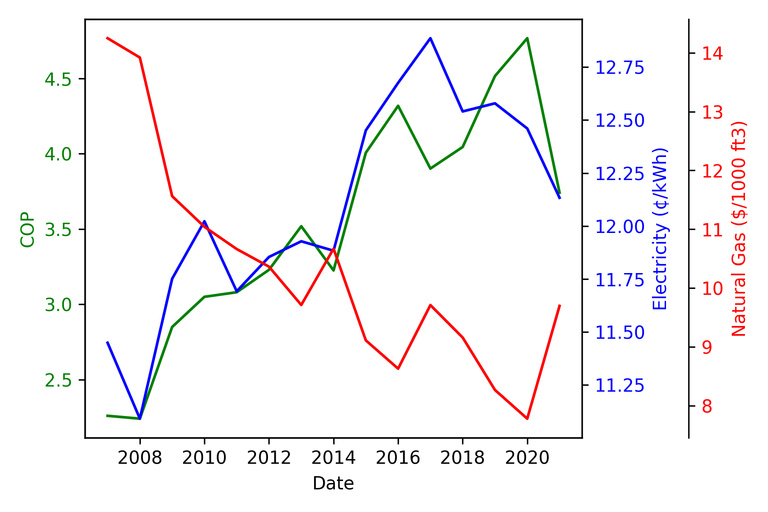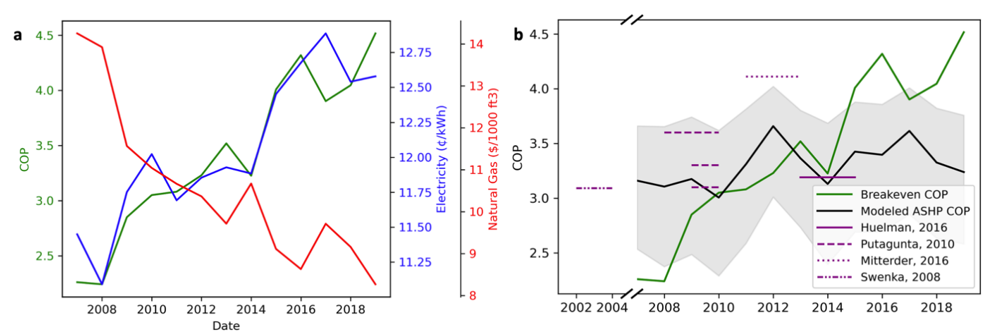A paper led by Austin Doak, accepted at Energy Science & Engineering.
https://onlinelibrary.wiley.com/doi/10.1002/ese3.1159
Authors: Austin Doak, Charles Stanier, Jerry Anthony, and HS Udaykumar
Abstract: Climate change mitigation demands rapid decarbonization; in cold regions such as the US Midwest, building thermal control (BTC) presents a potential for significant cuts in emissions by combining renewable energy with heat pumps. Trends in natural gas and electricity pricing over the period 2007-2020 have significantly upended economic feasibility of this decarbonization approach. Heat pump-based BTC has moved from being cost advantageous in operations but higher GHG emitting (in 2007), to the exact opposite – higher cost but lower emitting (in 2020). Due to energy price fluctuations, the coefficient of performance required of a heat pump to break even on operational cost with high efficiency natural gas heating has doubled, changing from 2.25 to 4.5 over the period 2007 to 2019. The value of 4.5 is infeasible for all available cold-climate heat pump systems. So while electrification via both air-source and ground-source heat pumps is a commonly found tactic in decarbonization plans in the region, actual implementation has declined. Improvements in heat pump performance, overcoming adoption barriers, and adopting policies that buffer long-term climate solutions against short-term price fluctuations are all needed. In part due to continuing decreases in carbon intensity of electricity, heat pump climate benefits can be substantial over project life cycles; however, there is no current policy mechanism to enable this benefit to be considered relative to short-run economic considerations.
updated figure on prices - goes to 2021 - illustrating price volatility nicely.

Updated version (through 2021) of Figure 1a from Doak et al. (2022)
from the paper - ending in 2019
